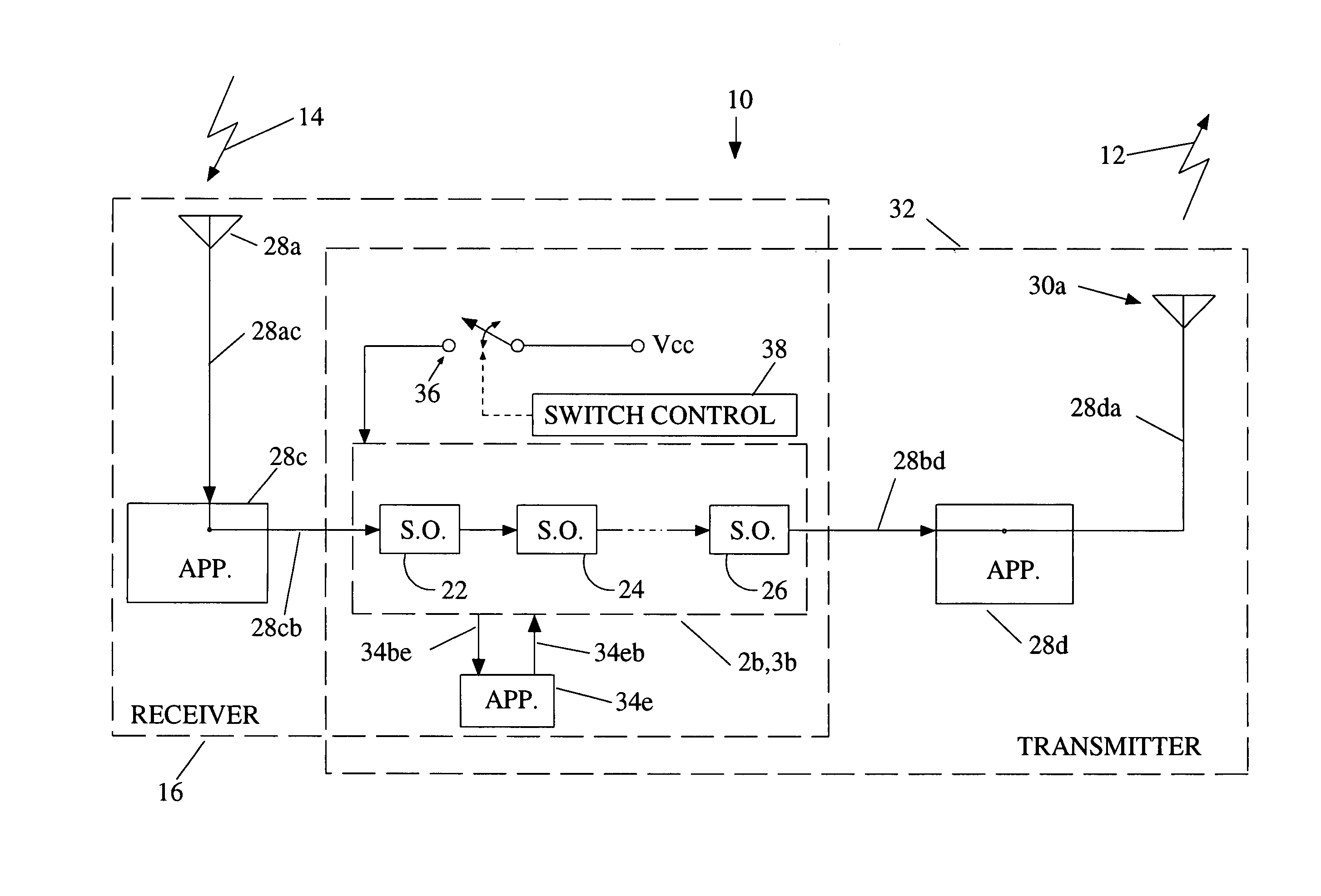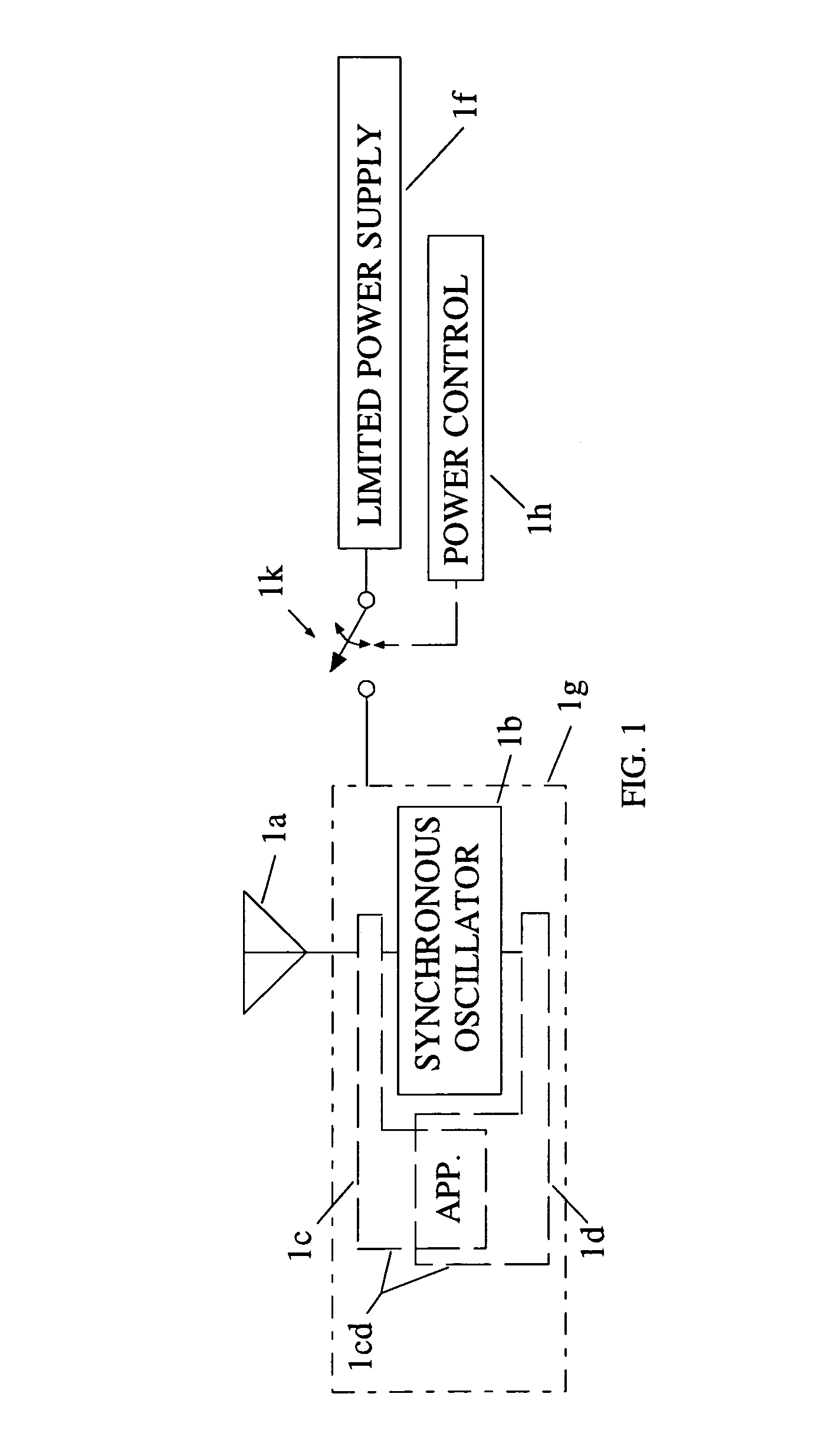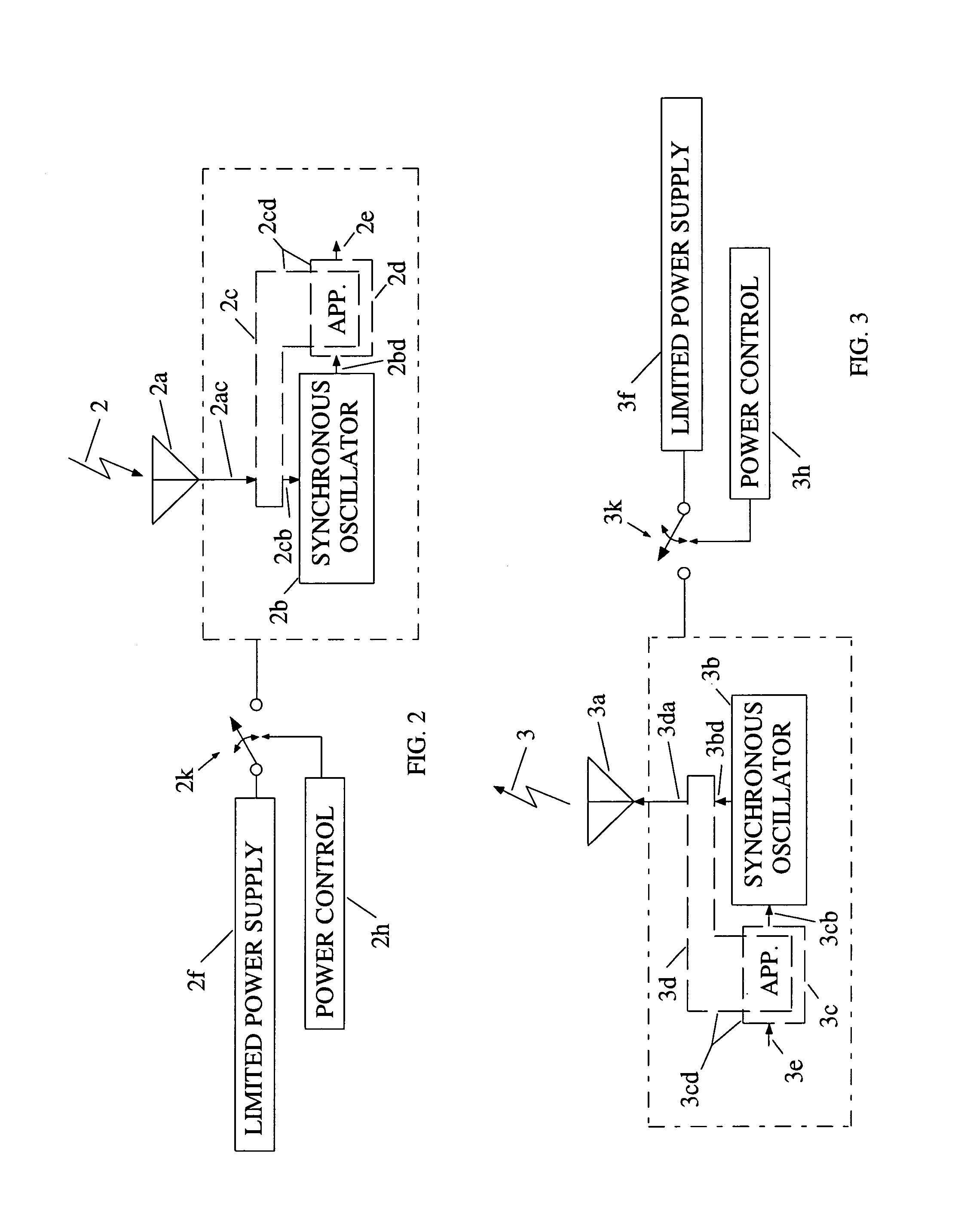Oscillator coupled to an antenna and an application
a technology of oscillator and antenna, applied in the direction of measuring device, using reradiation, instruments, etc., can solve the problems of conflicting power consumption and availability, inability to provide power through radiated electric or magnetic field, and limited power supply used to power the transponder, etc., to achieve the effect of improving power efficiency
- Summary
- Abstract
- Description
- Claims
- Application Information
AI Technical Summary
Benefits of technology
Problems solved by technology
Method used
Image
Examples
Embodiment Construction
[0103]FIG. 1 shows a radio frequency device, according to the present invention, comprising an application 1cd coupled to an antenna 1a and to an oscillator which is preferably but not necessarily a synchronous oscillator (S.O.) 1b. The antenna and the S.O. work together with the application 1cd to carry out the ends of the application which can be various. According to the present invention, the application takes advantage of the signal processing properties of the S.O. The application 1cd is shown comprising two parts, one part 1c coupled between the antenna 1a and the S.O. and the other part 1d coupled to the S.O. on the other side of the S.O., but it should be realized that the application may comprise one or both parts 1c, 1d. Either or both application parts 1c, 1d can exist in a given embodiment and their functions can be separate or overlapping but nonetheless together constitute an application. The application therefore interfaces with an input, an output, or both the input...
PUM
 Login to View More
Login to View More Abstract
Description
Claims
Application Information
 Login to View More
Login to View More - R&D
- Intellectual Property
- Life Sciences
- Materials
- Tech Scout
- Unparalleled Data Quality
- Higher Quality Content
- 60% Fewer Hallucinations
Browse by: Latest US Patents, China's latest patents, Technical Efficacy Thesaurus, Application Domain, Technology Topic, Popular Technical Reports.
© 2025 PatSnap. All rights reserved.Legal|Privacy policy|Modern Slavery Act Transparency Statement|Sitemap|About US| Contact US: help@patsnap.com



